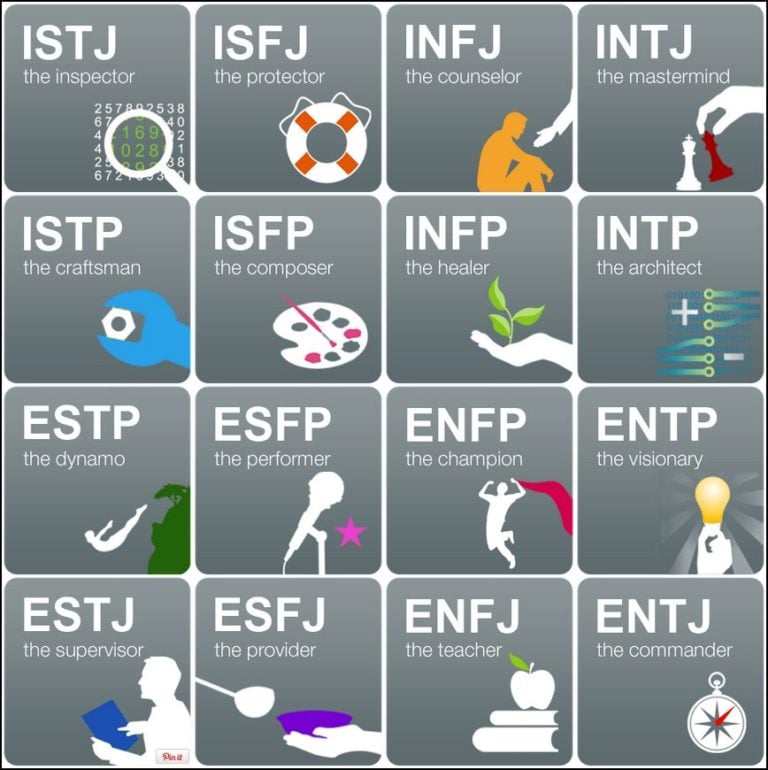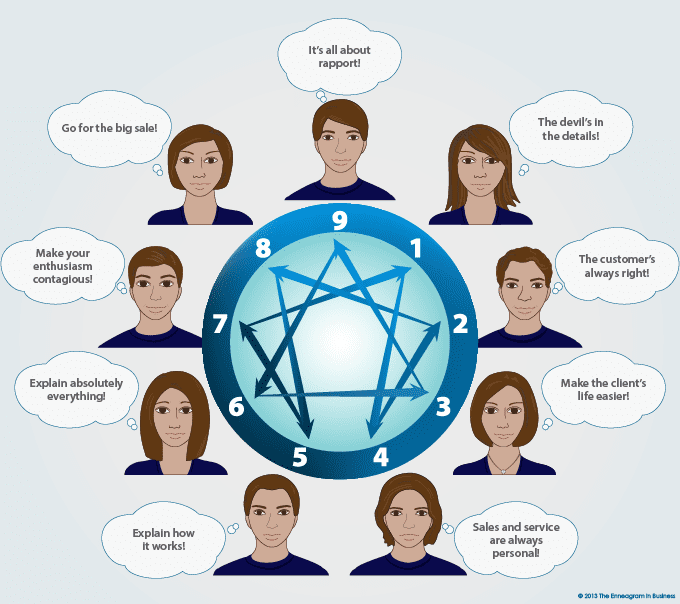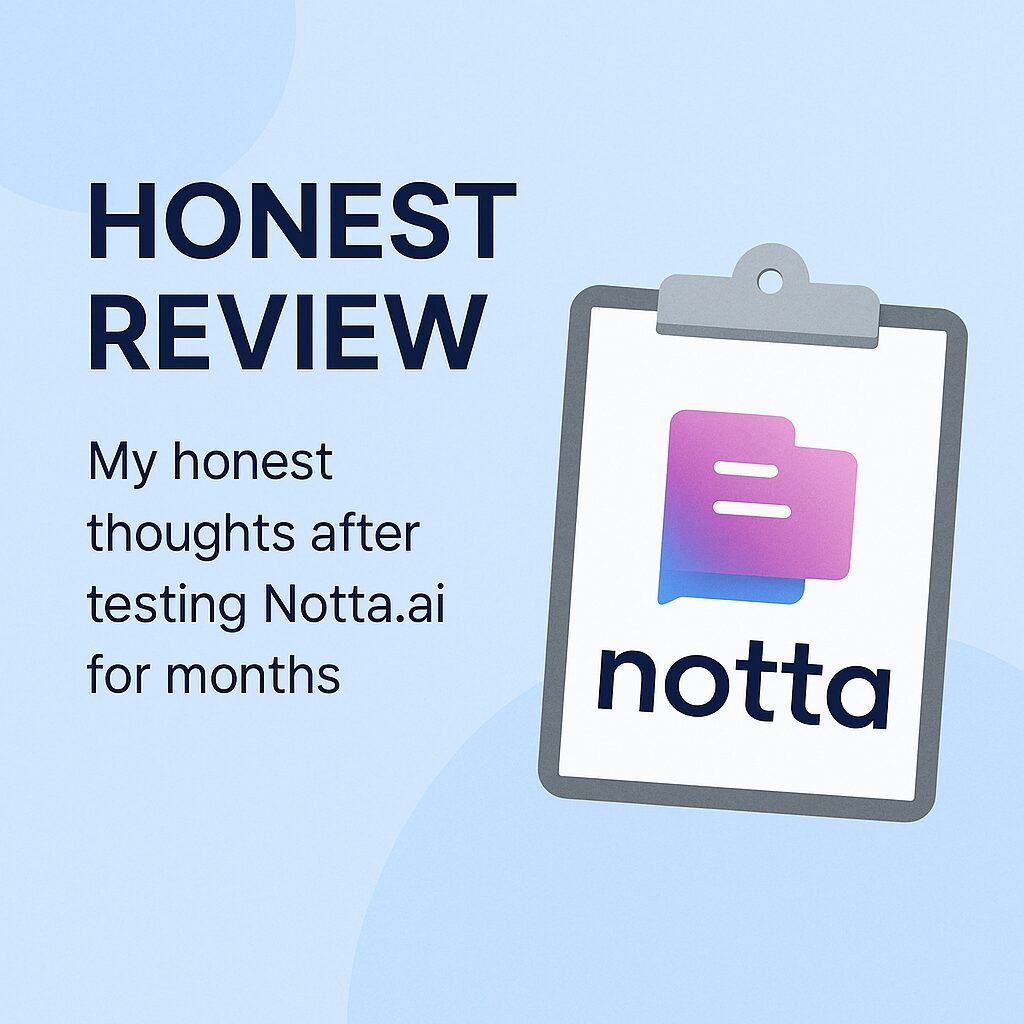Even people who don’t like to be sold to will buy something if you appeal to them in the right way. But what is the right way? And why does it always seem so elusive?
Enter the human psyche, a cosmic wonder of consciousness. Some believe it’s generated in the brain, and your specific personality grows out of the interconnected web of billions of neurons and trillions of synapses like an ever-changing universe inside your skull. Others, however, believe that this complex network inside the brain is simply a projector to allow consciousness to flow into your physical vessel, the human body.
Which is true? Neither has been out-and-out proven, which has led to a philosopher winning a 25 year long bet with a neuroscientist this year. But for the purposes of sales, it’s not too important. What matters is how can you use what we know about the human psyche to accelerate sales growth?

What Are The Different Personality Types to Look Out For?
It’s important to learn the distinction between different personality types so you know what to look out for. There are many models used to understand personality; here are just two of them:
- The Myers Briggs MBTI model of personality types
- The Enneagram
1. MBTI
The MBTI method used Jungian stereotypes to break individuals into sixteen different personality types. The MBTI assesses an individual’s personality based on four dichotomous scales, resulting in 16 different personality types. Each scale consists of two opposing preferences, and individuals are classified based on which preference they lean towards. The four scales are as follows:
Extraversion (E) vs. Introversion (I):
Extraversion: People who prefer Extraversion tend to be outgoing, sociable, and energized by interactions with others.
Introversion: People who prefer Introversion are more reserved, enjoy solitary activities, and gain energy from spending time alone.
Sensing (S) vs. Intuition (N):
Sensing: Those who prefer Sensing focus on concrete facts and details, relying on their senses and past experiences to understand the world.
Intuition: People who prefer Intuition focus on patterns, possibilities, and future outcomes, relying on their imagination and intuition to understand the world.
Thinking (T) vs. Feeling (F):
Thinking: Individuals who prefer Thinking tend to make decisions based on objective logic and analysis.
Feeling: People who prefer Feeling make decisions based on their values, emotions, and empathy for others.
Judging (J) vs. Perceiving (P):
Judging: Those who prefer Judging prefer structure, organization, and closure. They like to plan and make decisions promptly.
Perceiving: People who prefer Perceiving prefer flexibility, adaptability, and open-ended options. They like to keep their options open and adapt to new information.
To find out your type, you can take the free MBTI test.

Source: Shockingly Different.
2. Enneagram
The Enneagram is a tool with ancient origins, dating back to at least classical Greece, if not long before. It’s a dynamic and multi-faceted system that aims to understand individuals’ motivations, fears, desires, and behaviors. For this reason, many people consider it even more useful in their daily lives.
Where MBTI gives the flavor of a personality or what an individual is like in a more general sense, the Enneagram delves deep into what drives each individual. It suggests that each personality type has a core desire, fear, weakness, longing, and emotion. This is important for sales as you can use it more readily to understand a prospect’s position during a pitch. Knowing whether they’re introverted or not may help you somewhat, but knowing if they’re driven by perfectionism or by the need to impress others adds a deeper element to the game.

Source: Coach Flame.
While the Enneagram has ancient origins, it’s only recently been adopted by the Western world as a tool for self-awareness and personal growth.
Here is an overview of the nine Enneagram types:
Type 1 – The Perfectionist
Principled, purposeful, and self-controlled, type 1s strive for perfection. They can be critical of themselves and others.
- Core Desire: To be good, right, and ethical.
- Core Fear: Being corrupt, evil, or defective.
- Core Weakness: Resentment and self-critical.
Type 2 – The Giver
Generous, nurturing, and empathetic, type 2s often focus on meeting the needs of others and can struggle with setting boundaries.
- Core Desire: To be loved and appreciated.
- Core Fear: Being unworthy of love and unwanted.
- Core Weakness: Pride and people-pleasing.
Type 3 – The Achiever
Type 3s are ambitious, success-oriented, and image-conscious. They are driven to excel and can become overly focused on external validation.
- Core Desire: To be valuable and successful.
- Core Fear: Being worthless or a failure.
- Core Weakness: Deceit and vanity.
Type 4 – The Individualist
Type 4s are more creative, sensitive, and introspective. They often seek depth and authenticity, but can struggle with envy and feeling misunderstood.
- Core Desire: To be unique and authentic.
- Core Fear: Having no identity or significance.
- Core Weakness: Envy and self-absorption.
Type 5 – The Investigator
Analytical, insightful, and private, type 5s are knowledge-seeking and can be detached from their emotions.
- Core Desire: To be capable and knowledgeable.
- Core Fear: Being useless or helpless.
- Core Weakness: Avarice and isolation.
Type 6 – The Skeptic
Type 6s are loyal, responsible, and security-oriented. They can be anxious and seek reassurance from others.
- Core Desire: To have security and support.
- Core Fear: Being without support or guidance.
- Core Weakness: Anxiety and skepticism.
Type 7 – The Enthusiast
Type 7s are the life of the party: adventurous, spontaneous, and optimistic. They often seek new experiences and can struggle with being scattered or avoiding pain.
- Core Desire: To be happy and content.
- Core Fear: Being deprived or limited.
- Core Weakness: Gluttony and escapism.
Type 8 – The Challenger
Assertive, confident, and protective, type 8s value control and can have difficulty with vulnerability.
- Core Desire: To protect themselves and be in control.
- Core Fear: Being controlled or harmed by others.
- Core Weakness: Lust and excessive control.
Type 9 – The Peacemaker
Type 9s, on the other hand, are easygoing, agreeable, and accommodating. They may avoid conflict and struggle with inertia
- Core Desire: To have inner peace and harmony.
- Core Fear: Conflict and separation.
- Core Weakness: Sloth and complacency.
Which Model Should You Use for Understanding the Customer?

As mentioned above, the Enneagram is the better model for understanding the core motives and weaknesses of your customer. However, it’s also more complex to learn. It can get confusing at first glance: when a certain type displays stress they can move into the habits of a different type. Similarly, when they are relaxed and enjoying life they move to adopt more of the healthy habits of a different number depending on the Enneagram diagram.
This can also be important for your sales calls. By figuring out your prospect’s current mental state, you can get a clearer idea of who they are and what they want at this specific moment. Are they super busy, feel like they’ve got no time, and hardly able to focus? Or are they just about to go on a trip and already in the holiday spirit? You can pick up on this and detect where they might be at mentally to readjust your pitch and hit a home run.
A good example of this is written by Matt Schlegel, author of Teamwork 9.0. He’s right-handed, and often uses his right hand. But when he’s typing, he’ll also use his left hand. You’re not always your exact type. That would be ridiculous. We all inhabit parts of each type, just some a lot more than others. The one that we use the most is our dominant type, but in certain situations, we naturally adopt a different personality to help us cope.
Even non-ambidextrous people use their weaker hands.
How Do You Use the Enneagram Effectively in Sales?
There’s a whole host of things you can do, but first there are some basics:
- Learn. First and foremost, study the Enneagram in more detail to fully understand the different types and identify your friends and family, and more importantly, yourself.
- Record. While you’re reading up on the Enneagram, download tl;dv and get recording your sales pitches so you can go back and watch them. This will help you spot what your prospects are like after the pitch so you don’t have to waste time, energy, and concentration trying to figure it out mid call. It’s better spent elsewhere until you get the swing of it.
- Utilize. Once you’ve got the hang of it, you can start noticing what personality type somebody is early into the conversation. This is where you can begin to really make use of the Enneagram to accelerate sales growth.
Once you’ve dived a bit deeper into the Enneagram and you’ve studied your past prospects (or even colleagues on internal calls), then you can start picking up on personality types in real-time. Here are some great ways to do that, and then take that knowledge to help you make the sale.
Ask Questions
Figure out what problems the prospect is trying to solve, and use your listening skills (that were enhanced by rewatching your pitches with tl;dv) to really understand what they’re saying. Their answers will reveal their Enneagram type.
Type 1s might complain about not having all the small details needed to make decisions, while a type 6 might reel off a list of worries or concerns that they’ll need safely addressed before they proceed. An assertive type 8 will probably want something quick and efficient, where a type 3 might be more after something that will turn heads. If you’re a salesperson for a car dealership, you might want to be showing the type 3s the sports cars while showing the type 9s your electric ones and explaining to type 5s about the OCPP gateway connection for its charging station.
Alleviate Their Pain
Once you get a feel for your prospect’s type, you will have a better understanding of their fears. Type 3s are terrified of failure, while type 4s fear being normal or ordinary – they want to be unique. You can use this to your advantage by marketing your product in a way that alleviates their core fear.
Amplify Their Benefits
Pain is one end of a scale that slides all the way to benefits. Once you’ve identified your prospect’s fear, you can flip it on its head to make the benefits of your product resonate on a truly individual level.
Type 6s (who crave predictability) might be happier to hear “Our product removes the possibility of human error so you’ll be guaranteed reliable results every time you use it,” rather than, “Our service is automatic.” You’re describing the same product, but your choice of words will hit harder depending on the personality’s core fears.
Spot Patterns
What you’ll notice, when you’ve familiarized yourself with the Enneagram, is that certain personality types gravitate towards certain roles in a business. Type 7s tend to relish marketing, while type 8s like to take charge. You’ll often find 8s in managerial roles. Type 5s will probably be better off working independently, while type 9s are the perfect candidates for customer service.
When preparing content that’s going to be appropriate for your client, it’s good to have a solid grasp of this in mind so that you can pre-plan your pitches in advance, even if you’ve never met the prospect. You’d be surprised how much this works. You’ll rarely ever see a type 5 in customer service, for example. They’re considered the most introverted of the 9 types. But a type 9 is a peacemaker and likes to work out a deal that’s best for both parties. Type 2s could also make good customer service agents as they thrive off person-to-person connections. Each personality type is naturally suited to a different role.
How the Enneagram Can Benefit You as a Seller

Source: The Enneagram in Business.
The personality types aren’t just for detecting your prospect. Sure, that definitely helps, but what helps even more is understanding your own type and what your own weaknesses and flaws are. This is especially true if you were previously unaware of them. When you resonate with one of the Enneagram types, you’ll be able to improve your communication skills across the board.
Let’s take type 5s as an example. They are the most emotionally distant, which can be a bit off-putting for the person they’re communicating with. They can appear distant and robotic and their reserved nature can often come across as aloof or arrogant.
When type 5s become aware that this is inherently a 5 problem, they can work on it by consciously adding more emotion rather than focusing entirely on the logic. They can give a little more to their speech or text. Give it a bit more OOMPH! They need to learn to be less static and monotone and more dynamic and flexible. They can change their tone, alter their pitch, and adjust their cadence, throwing in some empathy (if they’re capable of feeling such a thing).
Blind Spots and How to Improve as a Salesperson
Below is a list of the 9 Enneagram types, their blind spots, and how to become aware and take action to become a more well-rounded communicator. While this won’t help you in specific pitches like the prospect’s Enneagram will, it will help you in a more general sense. It’s knowledge that you can take into all the pitches (and just life in general!).
Call recordings help here. If you’ve discovered that you’re a type 8 and your blind spot is that you can be a bit too intense or even combative, then the best way to see it in action is to go back and rewatch old pitches of you and focus on the things you say and the manner with which you hold yourself. With tl;dv. you can even make them into clips or highlight reels from multiple meetings.
Type 1: Perfectionist:
You’re focused on getting sh*t done the right way. You have a precise and direct way of speaking, drilling into the details from the get go. Your no-nonsense attitude often leaves you saying things like, “should, must, ideally, right, wrong.” Blind Spots: Because of your straight-to-the-point style, you can come across as impatient or even critical. It’s important for you to be right and others may see this as unreasonably stubborn. You can also often react defensively if criticized. Tips for Improving Your Sales Communication: Get into the habit of starting the conversation from a positive standpoint, also ensuring you end it on a positive note. By highlighting what’s wrong all the time, you can often sound negative so this is a great way to soften your communication style. Actively listen to your prospect and seek their opinions on things that you wouldn’t ordinarily have considered. Just because you have one way of doing things, it doesn’t mean that there are not others. Plus, it’s a great trust builder when you genuinely try to understand others.Type 2: Giver:
You’re warm and inviting, easily engaging others with your informal tone. You tend to like asking lots of questions and truly understanding your counterpart. In person, you can hold eye contact well and you love to create a personal connection with others. Your empathy inspires others. Blind Spots: One problem you often encounter is that you focus too much on the prospect and not enough on the actual pitch. Hold yourself back from getting too deeply involved with other people’s dramas. You care what other people think and want them to like you, however this can cause indirect communication as your motives are subconsciously split. Tips for Improving Your Sales Communication: Forming a personal connection is great – especially in sales – but don’t lose sight of the goal. Objectivity is key. Maintain focus on what needs to be done and practice disengaging from the more personal aspects of the conversation to drill down into why you’re both there. Avoid trying to people-please too much during sales pitches as it can confuse prospects and often leads to mixed messages.Type 3: Achiever:
You’re all about goals and achieving. Your communication style is clear, concise, and captivating. You’re a charmer, and you’re good at getting what you want. You stay on topic and dive right in with why you’re both there. Other people tend to view you as a professional with ambition. Your pace is swift and your wins are important to you. Blind Spots: One of the things most people pick up on is your impatience. You haven’t got time for small talk and sometimes this can come across as rude. You’re also proud of your reputation and can react strongly if you feel it’s under threat. Tips for Improving Your Sales Communication: Take your time. Take a few moments to connect on a human level. Show them some of your charm and you’ll get more out of your meetings. Become more aware of your patience levels. If you notice your patience is running thin, take some long deep breaths.Type 4: Individualist:
You’re authentic and honest. Discussing potentially controversial issues or deeper feelings is not a problem for you. Your creative style is engaging and your ability to empathize is endearing. Blind Spots: One thing you might do a little too often is reference yourself. You tend to empathize so deeply that you relate everything to yourself and your life. You may come across as intense and emotionally overwhelming. If the prospect wants to look elsewhere, you may take this personally. Tips for Improving Your Sales Communication: Rely less on your subjective emotions and more on logic and facts. While emotional authenticity is valuable in sales pitches, it shouldn’t replace rational thinking, rather complement it. Even if your other speaker is incredibly boring, try to listen attentively. Avoid self-referencing.Type 5: Investigator:
You are focused on your time and energy. You can easily get overwhelmed by external demands. Your communication style tends to be reserved. You rarely share your deepest emotions and you usually get straight to the point. By sticking to the facts, you can appear cold and distant. Others might find it hard to connect with you. Blind Spots: Your reserved nature can often be mistaken for arrogance. Some people think you simply don’t care. You can even be described as robotic because you tend to favor logic to feelings. Tips for Improving Your Sales Communication: Become aware of your hesitancy to speak your mind, and set it aside with discipline. Add more emotion to your conversation and relate more deeply to the experience of the other person.
Type 6: Skeptic:
Your communication style often revolves around what-if scenarios and worries about what could go wrong. You can be in defense mode a lot, rarely letting anyone close enough to hurt you. You can be indecisive and hesitant, especially if you feel a certain concern hasn’t been properly addressed. Blind Spots: Others often see you as pessimistic or a worrywart. You can lose support for your case by ignoring the potential good outcomes. Overcommunication can occur if you get too anxious which can cause confusion or turn people away. Tips for Improving Your Sales Communication: When you communicate, become aware of how many times you use words or phrases related to fear, anxiety, and worry when you communicate. If you’re covering a negative scenario, or an objection, try to present the positive scenario with just as much emotion. Use wellness and self-help methods like meditation to better manage your anxiety. It’ll help you make more rational decisions.Type 7: Enthusiast:
You focus on the positive side of life. You’re usually upbeat, informal, and stimulating in the way you speak. Your words come out quickly and they carry a lot of weight. Often you’ll weave your words into a story to engage more deeply with your audience. However, you tend to interrupt people as a way to offer support. Blind Spots: Your listening skills aren’t the best and your attention span is fairly short. This can lead to you missing important details or disengaging from the conversation, leading to a weaker connection to your prospect. You don’t always realize how interrupting your prospect to layer in additional information can be seen as rude or domineering. Tips for Improving Your Sales Communication: Practice active listening and minimize interruptions. Focus on the other person and let them do the talking. This is especially critical for sales calls as a prospect that keeps getting interrupted will assume you’re not listening to them and will be far less likely to do business. Another thing to keep in mind is not to skip over the negatives. It can be tempting, but they are important, especially if brought up by the prospect.Type 8: Leader:
Your communication style is bold and direct. You hold authority and usually lead a call or meeting well. Your straightforward style can be seen as intimidating by some, even though you’re just trying to get sh*t done. You’re not one to hide away from conflict. Getting to the root cause of problems is important to you and you won’t stop until you do. Blind Spots: You are intense. You can be quick to turn to anger or frustration if things aren’t going as planned and this can come across as intimidating. You can also be so brief and direct that you potentially alienate people. Tips for Improving Your Sales Communication: Engage with others on a more personal level. Not everything has to be so formal. Relax. Start communications friendly rather than jumping straight to the point. Listen more to what others are saying and restrain from leading every single conversation, especially if your prospect is opening up to you about their pain points or motives. Let it flow organically when necessary.Type 9: Peacemaker:
You like to avoid conflict at all costs. You’re easygoing and relaxed. You’re accepting of others and love to make everyone feel comfortable. Justice, equality, and balance is important to you. Your attempts to always find the middleground and please everyone can sometimes lead to confusion. Blind Spots: It’s often difficult to know your opinion on things. You can evade the point so much that you leave people feeling confused or lost. Indecision can paralyze you when you realize you can’t please all involved parties. Tips for Improving Your Sales Communication: Take a clear stance on issues. If you’re selling a product, your stance should be fairly self-explanatory. Be more direct and state your desires to the other person with conviction. Remember that conflict doesn’t have to be bad. You can learn from it.How Do You Know a Prospect’s Personality Type?
It takes practice. Understanding that the vast array of unique human beings can be boiled down into a dozen or so categories can be a bit bewildering at first. And while it’s not an exact science, it’s certainly an accurate tool that can accelerate sales growth as well as strengthen relationships.
Once you’ve read up on different personality types, you can use a wealth of call recordings to go back and identify which prospect was which personality type. How did they respond to certain questions or statements? What were their concerns or pain points? You’ll likely start to notice patterns.
For this to work, you need to have a great call recording library that makes it easy to scan through your existing calls. With tl;dv, you can search by keyword and even make clips and highlight reels of each personality type so that you can share it with your colleagues during sales training or even onboarding to ease their growth and help them identify the way to approach new personality types straight away.
As well as the tons of other benefits that tl;dv offers for sales pitches, it can be used to study and monitor your prospects’ behavior over time so that you can take advantage of it during your next live pitch.
Understand Yourself, Understand Your Prospect, Get the Sale
Now you know the key to unlocking the Enneagram for sales pitches, you can download tl;dv for Zoom or get the chrome extension for Google Meet and start recording your meetings today. Before long, you’ll have a much greater understanding of how you communicate and how those around you operate. With this knowledge, you can accelerate sales growth and take your pitches to the next level.














